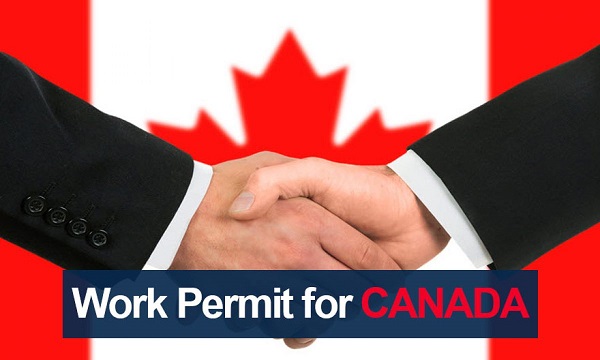Obtaining a work visa for the United Kingdom involves a series of steps and requirements. While this comprehensive guide cannot cover every detail, it will provide you with a general overview of the process. Please note that immigration laws and regulations can change, so it’s essential to consult the official UK government websites or seek professional advice for the most up-to-date and accurate information.
Step 1: Determine the Appropriate Work Visa Category
The United Kingdom offers various work visa categories depending on your circumstances. The most common categories are as follows:
- Tier 2 (General) Visa: For skilled workers offered a job in the UK by a licensed employer.
- Tier 2 (Intra-company Transfer) Visa: For employees of multinational companies being transferred to a UK branch.
- Tier 5 (Temporary Worker) Visa: For individuals engaging in temporary work, including charity work, creative and sporting events, and government authorized exchange programs.
- Tier 1 (Entrepreneur) Visa: For individuals looking to establish or take over a UK business.
- Tier 1 (Investor) Visa: For high net worth individuals making a significant investment in the UK.
Step 2: Employer Sponsorship
If you are applying for a Tier 2 (General) or Tier 2 (Intra-company Transfer) visa, you must have a job offer from a UK-based employer who holds a valid sponsor license. The employer will provide you with a Certificate of Sponsorship (CoS) or a document confirming the job offer.
Step 3: English Language Proficiency
In most cases, you will need to prove your English language proficiency. The accepted language tests are the International English Language Testing System (IELTS) or the Test of English as a Foreign Language (TOEFL). Ensure you meet the minimum language requirements for your specific visa category.
Step 4: Point-Based System
The UK operates a points-based system for work visas. You need to score a specific number of points based on various factors, such as your job offer, qualifications, English language skills, and available maintenance funds.
Step 5: Maintenance Funds
You will need to demonstrate that you have enough funds to support yourself in the UK. The specific amount varies depending on your visa category and whether you are applying from within or outside the UK. Make sure you have the required funds in your bank account for a specified period.
Step 6: Visa Application
Once you have gathered all the necessary documents, you can proceed with the visa application process. This usually involves completing an online application form, paying the application fee, and booking an appointment at a visa application center (if applicable).
Step 7: Biometric Information and Supporting Documents
Attend the appointment at the visa application center to provide your biometric information, including fingerprints and a photograph. You will also need to submit supporting documents such as your passport, CoS, proof of qualifications, English language test results, and financial documents.
Step 8: Health Surcharge
In most cases, you will be required to pay the Immigration Health Surcharge as part of your visa application. This payment grants you access to the National Health Service (NHS) during your stay in the UK.
Step 9: Decision and Processing Time
After submitting your application, it will be processed by UK Visas and Immigration. The processing time can vary depending on the visa category, country of application, and other factors. You can check the estimated processing times on the official UK government website.
Step 10: Biometric Residence Permit (BRP)
If your visa application is successful, you will be issued a vignette sticker in your passport that allows you to enter the UK. Once you arrive in the UK, you must collect your Biometric Residence Permit (BRP) within a specific period, usually within 10 days. The BRP serves as your official immigration status document and includes important information such as your visa conditions, validity dates, and any work restrictions.
Step 11: Arrival in the UK
Upon arrival in the UK, it is essential to comply with the conditions of your visa. Make sure to familiarize yourself with the specific requirements outlined in your visa and maintain regular contact with your employer or sponsor.
Step 12: Visa Extension or Switching Categories
If you wish to extend your stay in the UK or switch to a different work visa category, you must follow the appropriate procedures. It is crucial to start the application process well in advance of your current visa’s expiration date to avoid overstaying and potential immigration issues.
Step 13: Indefinite Leave to Remain (ILR) and British Citizenship
Depending on your circumstances and visa category, you may become eligible for Indefinite Leave to Remain (ILR) after a certain period of continuous residence in the UK. ILR grants you the right to live and work in the UK without any time restrictions. Moreover, ILR is a prerequisite for applying for British citizenship if you wish to obtain UK citizenship in the future.
Step 14: Seek Professional Advice
Navigating the UK work visa process can be complex, and individual circumstances may vary. It is highly recommended to seek professional advice from immigration experts or solicitors who specialize in UK immigration law. They can provide personalized guidance and ensure that you meet all the requirements and deadlines.
Conclusion
Obtaining a work visa for the United Kingdom requires careful preparation, adherence to specific requirements, and attention to detail. This comprehensive guide has provided you with a step-by-step overview of the process, but it is crucial to consult the official UK government websites or seek professional advice for the most accurate and up-to-date information regarding your specific circumstances. Good luck with your UK work visa application!






